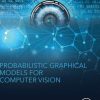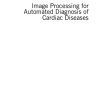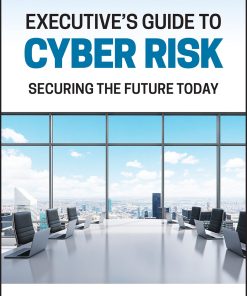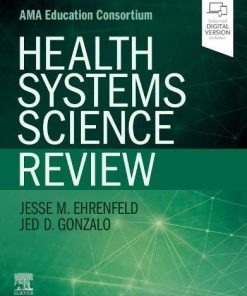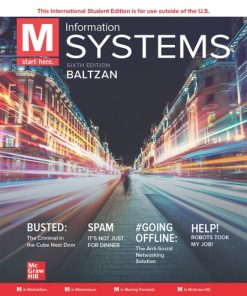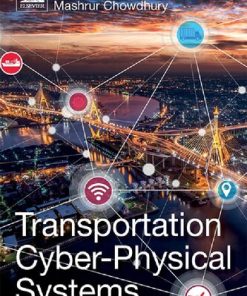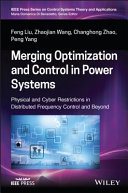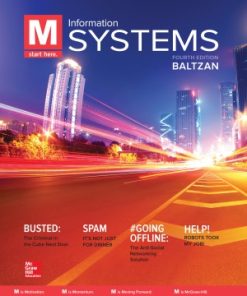(Ebook PDF) Cyber Physical Human Systems 1st Edition by Anuradha Annaswamy ISBN 9781119857426 1119857422 full chapters
$50.00 Original price was: $50.00.$25.00Current price is: $25.00.
(Ebook PDF) Cyber Physical Human Systems 1st Edition by Anuradha Annaswamy-Ebook PDF Instant Download/Delivery:9781119857426, 1119857422
Instant download Full Chapter of Cyber Physical Human Systems 1st Edition after payment
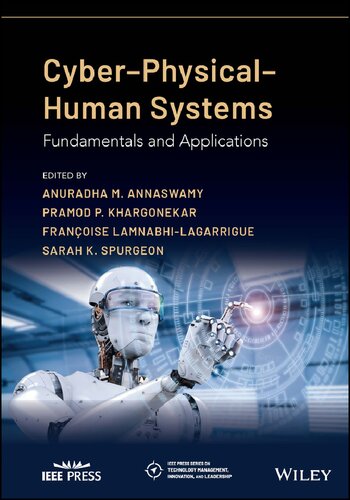
Product details:
ISBN 10: 1119857422
ISBN 13: 9781119857426
Author: Anuradha M. Annaswamy
In Cyber–Physical–Human Systems: Fundamentals and Applications, a team of distinguished researchers delivers a robust and up-to-date volume of contributions from leading researchers on Cyber–Physical–Human Systems, an emerging class of systems with increased interactions between cyber–physical, and human systems communicating with each other at various levels across space and time, so as to achieve desired performance related to human welfare, efficiency, and sustainability.
The editors have focused on papers that address the power of emerging CPHS disciplines, all of which feature humans as an active component during cyber and physical interactions. Articles that span fundamental concepts and methods to various applications in engineering sectors of transportation, robotics, and healthcare and general socio-technical systems such as smart cities are featured. Together, these articles address challenges and opportunities that arise due to the emerging interactions between cyber–physical systems and humans, allowing readers to appreciate the intersection of cyber–physical system research and human behavior in large-scale systems.
Table of contents:
Part I: Fundamental Concepts and Methods
- 1 Human‐in‐the‐Loop Control and Cyber–Physical–Human Systems: Applications and Categorization
- 1.1 Introduction
- 1.2 Cyber + Physical + Human
- 1.3 Categorizing Human‐in‐the‐Loop Control Systems
- 1.4 A Roadmap for Human‐in‐the‐Loop Control
- 1.5 Discussion
- 1.6 Conclusions
- Acknowledgments
- References
- 2 Human Behavioral Models Using Utility Theory and Prospect Theory
- 2.1 Introduction
- 2.2 Utility Theory
- 2.3 Prospect Theory
- 2.4 Summary and Conclusions
- Acknowledgments
- References
- Notes
- 3 Social Diffusion Dynamics in Cyber–Physical–Human Systems
- 3.1 Introduction
- 3.2 General Formalism for Social Diffusion in CPHS
- 3.3 Modeling Decision‐Making
- 3.4 Dynamics in CPHS
- 3.5 Ongoing Efforts Toward Controlling Social Diffusion and Future Challenges
- Acknowledgments
- References
- 4 Opportunities and Threats of Interactions Between Humans and Cyber–Physical Systems – Integration and Inclusion Approaches for CPHS
- 4.1 CPHS and Shared Control
- 4.2 “Tailor‐made” Principles for Human–CPS Integration
- 4.3 “All‐in‐one” based Principles for Human–CPS Inclusion
- 4.4 Dissonances, Opportunities, and Threats in a CPHS
- 4.5 Examples of Opportunities and Threats
- 4.6 Conclusions
- References
- 5 Enabling Human‐Aware Autonomy Through Cognitive Modeling and Feedback Control
- 5.1 Introduction
- 5.2 Cognitive Modeling
- 5.3 Study Design and Data Collection
- 5.4 Cognitive Feedback Control
- 5.5 Summary and Opportunities for Further Investigation
- References
- Notes
- 6 Shared Control with Human Trust and Workload Models
- 6.1 Introduction
- 6.2 Preliminaries
- 6.3 Conceptual Description of Shared Control
- 6.4 Synthesis of the Autonomy Protocol
- 6.5 Numerical Examples
- 6.6 Conclusion
- Acknowledgments
- References
- 7 Parallel Intelligence for CPHS: An ACP Approach
- 7.1 Background and Motivation
- 7.2 Early Development in China
- 7.3 Key Elements and Framework
- 7.4 Operation and Process
- 7.5 Applications
- 7.6 Conclusion and Prospect
- References
Part II: Transportation
- 8 Regularities of Human Operator Behavior and Its Modeling
- 8.1 Introduction
- 8.2 The Key Variables in Man–Machine Systems
- 8.3 Human Responses
- 8.4 Regularities of Man–Machine System in Manual Control
- 8.5 Mathematical Modeling of Human Operator Behavior in Manual Control Task
- 8.6 Applications of the Man–Machine System Approach
- 8.7 Future Research Challenges and Visions
- 8.8 Conclusion
- References
- 9 Safe Shared Control Between Pilots and Autopilots in the Face of Anomalies
- 9.1 Introduction
- 9.2 Shared Control Architectures: A Taxonomy
- 9.3 Recent Research Results
- 9.4 Summary and Future Work
- References
- 10 Safe Teleoperation of Connected and Automated Vehicles
- 10.1 Introduction
- 10.2 Safe Teleoperation
- 10.3 CPHS Design Challenges in Safe Teleoperation
- 10.4 Recent Research Advances
- 10.5 Future Research Challenges
- 10.6 Conclusions
- References
- 11 Charging Behavior of Electric Vehicles
- 11.1 History, Challenges, and Opportunities
- 11.2 Data Sets and Problem Modeling
- 11.3 Control and Optimization Methods
- 11.4 Conclusion and Discussion
- References
Part III: Robotics
- 12 Trust‐Triggered Robot–Human Handovers Using Kinematic Redundancy for Collaborative Assembly in Flexible Manufacturing
- 12.1 Introduction
- 12.2 The Task Context and the Handover
- 12.3 The Underlying Trust Model
- 12.4 Trust‐Based Handover Motion Planning Algorithm
- 12.5 Development of the Experimental Settings
- 12.6 Evaluation of the Motion Planning Algorithm
- 12.7 Results and Analyses, Type I Assembly
- 12.8 Results and Analyses, Type II Assembly
- 12.9 Conclusions and Future Work
- Acknowledgment
- References
- 13 Fusing Electrical Stimulation and Wearable Robots with Humans to Restore and Enhance Mobility
- 13.1 Introduction
- 13.2 Control Challenges
- 13.3 Examples
- 13.4 Transfer into Daily Practice: Integrating Ethical, Legal, and Societal Aspects into the Design
- 13.5 Summary and Outlook
- Acknowledgments
- Acronyms
- References
- Notes
- 14 Contemporary Issues and Advances in Human–Robot Collaborations
- 14.1 Overview of Human–Robot Collaborations
- 14.2 Passivity‐Based Human‐Enabled Multirobot Navigation
- 14.3 Operation Support with Variable Autonomy via Gaussian Process
- 14.4 Summary
- Acknowledgments
- References
- Notes
Part IV: Healthcare
- 15 Overview and Perspectives on the Assessment and Mitigation of Cognitive Fatigue in Operational Settings
- 15.1 Introduction
- 15.2 Cognitive Fatigue
- 15.3 Cyber–Physical System and Cognitive Fatigue: More Automation Does Not Imply Less Cognitive Fatigue
- 15.4 Assessing Cognitive Fatigue
- 15.5 Limitations and Benefits of These Measures
- 15.6 Current and Future Solutions and Countermeasures
- 15.7 System Design and Explainability
- 15.8 Future Challenges
- 15.9 Conclusion
- References
- 16 Epidemics Spread Over Networks: Influence of Infrastructure and Opinions
- 16.1 Introduction
- 16.2 Epidemics on Networks
- 16.3 Epidemics and Cyber–Physical–Human Systems
- 16.4 Recent Research Advances
- 16.5 Future Research Challenges and Visions
- References
- Notes
- 17 Digital Twins and Automation of Care in the Intensive Care Unit
- 17.1 Introduction
- 17.2 Digital Twins and CPHS
- 17.3 Role of Social‐Behavioral Sciences
- 17.4 Future Research Challenges and Visions
- 17.5 Conclusions
- References
Part V: Sociotechnical Systems
- 18 Online Attention Dynamics in Social Media
- 18.1 Introduction to Attention Economy and Attention Dynamics
- 18.2 Online Attention Dynamics
- 18.3 The New Challenge: Understanding Recommendation Systems Effect in Attention Dynamics
- 18.4 Conclusion
- Acknowledgments
- References
- 19 Cyber–Physical–Social Systems for Smart City
- 19.1 Introduction
- 19.2 Social Community and Smart Cities
- 19.3 CPSS Concepts, Tools, and Techniques
- 19.4 Recent Research Advances
- 19.5 Conclusions
- Acknowledgments
- References
Part VI: Concluding Remarks
- 20 Conclusion and Perspectives
- 20.1 Benefits to Humankind: Synthesis of the Chapters and their Open Directions
- 20.2 Selected Areas for Current and Future Development in CPHS
- 20.3 Ethical and Social Concerns: Few Directions
- 20.4 Afterword
People also search:
cyber-physical systems examples
cyber-physical system
cyber-physical systems definition
cyber-physical systems foundations principles and applications
human cyber physical systems
Tags:
Anuradha Annaswamy,Cyber Physical Human Systems,Fundamentals,Applications
You may also like…
Business & Economics
Business & Economics - Others
Technique - Electronics
Technique - Energy: Renewable Energy


